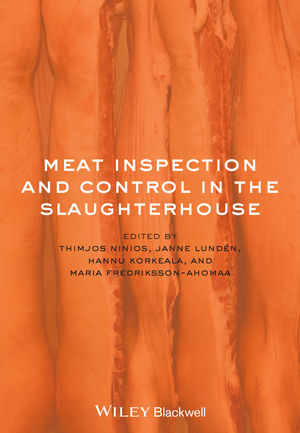STATE OF THE INDUSTRY: FOOD SAFETY
State of the Industry: Rough year in food safety
Processors must change the perception that the industry doesn’t care about customers and is making and selling unsafe products.

Not only have there been multiple recalls of meat and poultry products that have been linked to human illness, but there have also been multiple linked to deaths, entire plants shuttered, and per a recent Gallup poll the American people are losing confidence in the food industry.
Do we need more regulations? No, what we need is more focus on the basics.
For livestock we need to have better controls preharvest. This is something we have very little control over. USDA FSIS is pushing very hard for preharvest sampling followed by reacting to said results. Unfortunately, short of refusing to harvest the animals, most harvest facilities have already implemented multiple interventions giving them very little additional interventions that they can implement. Add to it the public is becoming very resistant to chemical treatments. Ultimately, we need USDA APHIS to step up and develop better controls that our farmers, ranchers and feedlots can implement to reduce pathogen load. Robust sanitary dressing procedures have been and will be our first and best line of defense.
For our raw intact processors, we need to focus on temperature control and basic sanitation. Automated temperature control, frequently taking internal product temperatures in unrefrigerated processing spaces and keeping said temperature as low as possible. If any of the trim from these processes is headed to raw not intact processing we need to apply an antimicrobial intervention prior to processing, the risk of viable non-culturable cells being present on primals, is just too high of a risk.
For raw not intact processors temperature controls and basic sanitation need to be our focus. Grinders, mixers, extruders, needlers, etc., all have the potential to increase product temperature during processing as well as the potential introduction of foreign material into product. What do you have for temperature controls? I recommend you map your process to determine where your highest temperature is in your process and put the appropriate controls in place.
For foreign material, and this applies to any food production category, it starts with your receiving program then moves to your pre-operational checks. When the cleaning team is disassembling your equipment are they trained to inspect the equipment for damage? Do they know how to properly report it if there is damage? Does your food safety team know how to properly investigate and find the contamination?
Post lethality contamination prevention is critical. Does your sanitation team use multiple sanitizers that are rotated? Are all of your food contact surfaces in good condition so that those sanitizers can work? If you do have areas that are hard to reach or have liquid restrictions are you using vaporized alcohol? Remember water tension for most liquid sanitizers is approximately 72.8 dynes/cm compared to 22.3 for alcohol vapor, i.e., it is very effective at getting into those hard-to-reach areas.
Are your sampling programs truly robust, are you actively looking for Listeria? When you have a positive is your team trained on how to investigate, find, and eliminate the harborage points?
Another thing to keep in mind is that while the USDA FSIS compliance guidelines don’t require non-food contact surface testing, is it worth it to allow Listeria in your environment and not know about it? This is especially true when you are doing construction, equipment repair or introducing new equipment into your environment.
Ready to eat areas must be kept in good condition. Reading NRs about mold, filth, etc., in ready to eat areas should immediately send a flag to senior management. If senior management isn’t being included in USDA FSIS in-plant personal communications they need to become involved immediately. When I read the CDC public notification to not eat deli meats my stomach dropped, it meant they had enough information to go after a complete segment of our industry.
For the majority of our clients we don’t stove pipe the food safety program, we analyze each process category and transfer from one food safety system to another. The reason for this is that it forces us to look at each step in our process in detail. When something goes wrong in a lethality or stabilization process we know we had controls in place earlier in our process. Making any modelling or sampling much easier to validate.
Years ago Mr. Steven Cortinez told me his basic philosophy was 1) keep it clean, 2) keep it covered, and 3) keep it cold. It was and still is great advice.
Crystal ball
We know that polling is reporting people’s perceptions. We must change the perception that we as an industry don’t care about our customers and is making and selling unsafe products. Nothing could be further from the truth, we are making billions of pounds of safe, healthy, product every year.
Our regulatory authorities will have to respond to the loss of faith by the American people in our ability to provide them with safe product. What that is going to look like, be it additional regulations, more aggressive enforcement, or a combination of the two I don’t know; what I do know is that they will be pushed to do something.
The calls for breaking up the Big 4 meat and poultry companies is getting louder; without explaining how this would make product safer.
It behooves all of us to take a hard look at our processes and make sure we have implemented the appropriate controls and communicate it to our customers.
Looking for a reprint of this article?
From high-res PDFs to custom plaques, order your copy today!









